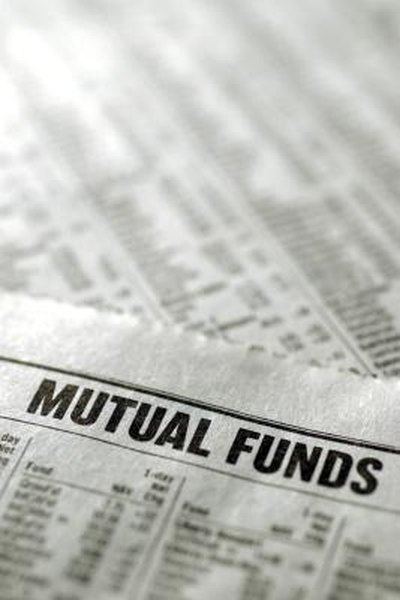The Average Mutual Fund Sales Charges
Load mutual funds will have an offer price and a net asset value.
Thinkstock/Comstock/Getty Images
The universe of mutual funds fits into the two broad classifications of load and no-load funds. No-load mutual funds do not have any sales charge to buy shares of a fund. With load-type funds, the sales charge is listed as a percentage included in the purchase price of fund shares. Higher investment amounts result in lower sales charge percentages.
Mutual Fund Sales Charges
The load or sales charge of a mutual fund is included in the price per share an investor pays. The current share price of a mutual fund is referred to as the net asset value, or NAV. The share price including the sales charge is referred to as the public offering price, or POP. The percentage difference between the NAV and POP -- based on the POP -- is the sale charge. For example, a fund with a current NAV of $10 and a 5 percent load has a POP of $10.53. The 53 cent difference is 5 percent of the $10.53 POP.
Average Maximum Load
The maximum legally allowed load for a mutual fund is 8.5 percent. Most funds have a top sales charge much lower than the maximum. The Investment Company Institute publishes an annual "Fact Book" that gives the average sales charges by type of mutual fund. The categories are stock funds, bond funds and hybrid funds that own both stocks and bonds. For 2011, the average load for stock funds was 5.4 percent, the average for bond funds was 3.9 percent and the hybrid average load was 5.2 percent. These averages are for funds that have front-end sales charges and do not include no-load funds or funds with deferred sales charges.
What Investors Actually Pay
All load mutual funds have break points that result in a lower sales charges and POPs for larger investment amounts. The sales charge percentage starts to decline at investment amounts of $25,000 to $50,000 and falls even more at levels such as $100,000, $250,000, $500,000 and $1 million. The sales charge at a million dollars is usually zero percent. According to the Investment Company Institute, the actual sales charge paid in 2011 averaged 1 percent for stock and hybrid fund investors and 0.7 percent for bond fund investors.
Share Classes
Mutual fund companies often offer a single mutual fund with different commission and load structures. The traditional front-end loaded shares with a POP and NAV are class A shares. Class B and class C shares are sold at NAV and have deferred sales charges if an investor sells out early. These classes are also referred to as back-end loaded. Class B and C shares have higher annual expenses than the A shares, so the total return from paying the maximum front load or going with a back-end load is about the same after six or seven years. An investor who is investing enough to reach a class A break point will be better off with the front-loaded shares.
References
Writer Bio
Tim Plaehn has been writing financial, investment and trading articles and blogs since 2007. His work has appeared online at Seeking Alpha, Marketwatch.com and various other websites. Plaehn has a bachelor's degree in mathematics from the U.S. Air Force Academy.

